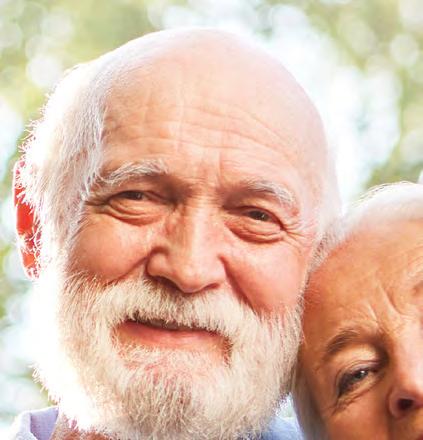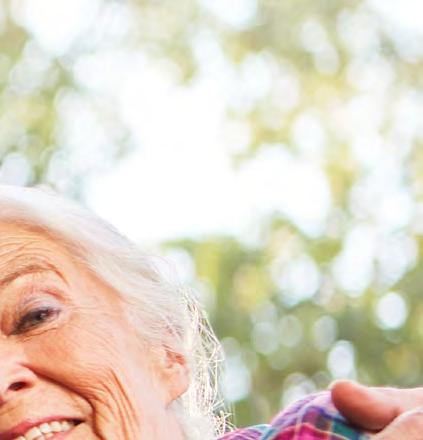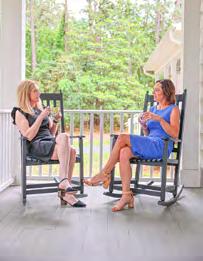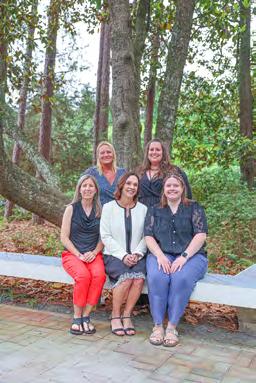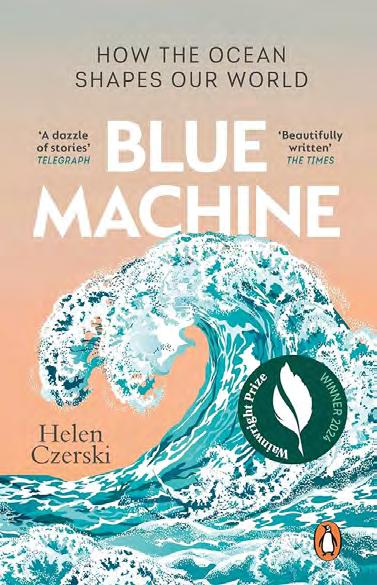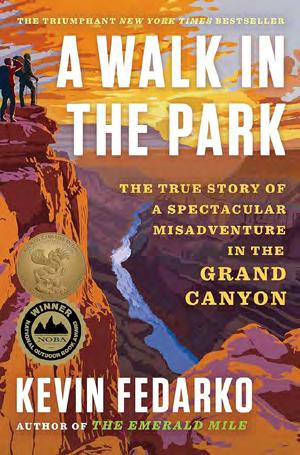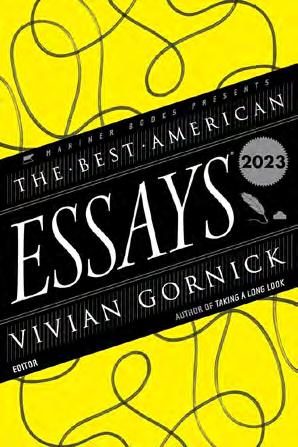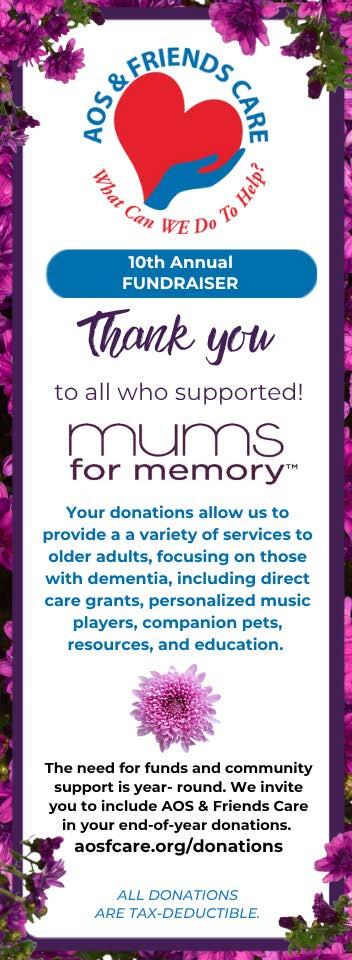SEEING BEYOND THE STEREOTYPES
by Amy Phariss
This year, I turned 50. I’ve sometimes felt the shift myself: subtle glances, comments about “that’s impressive for someone your age,” or the undercurrent that my role in the world should narrow now. As a woman, aging often comes encumbered with expectations around appearance, youth, and what counts as acceptable aging.
In my work as a mental health counselor, I also hear clients speak of ageism’s weight: “At 67, I feel invisible,” “I wonder what my value is now,” “I’m overlooked in conversations, even by my own family.” People shift not just roles but their sense of meaning, wondering how to re-place themselves in a society that prizes youth.
Defining Ageism
To tackle the problem, we must name it precisely. The World Health Organization defines ageism as:
“…THE STEREOTYPES (HOW WE THINK), PREJUDICE (HOW WE FEEL) AND DISCRIMINATION (HOW WE ACT) TOWARDS OTHERS OR ONESELF BASED ON AGE.”
What’s powerful in that definition is that it includes self-directed stereotypes and bias — meaning we internalize many of the same messages we absorb from culture.
The American Psychological Association adds that ageism is pervasive and deeply ingrained, affecting people across the lifespan.
How Widespread Is It?
It’s more universal than many realize:
• In one national U.S. sample, 93% of adults aged 50–80 reported experiencing “everyday ageism.” American Society on Aging+1
• Globally, the WHO notes that one in two people hold ageist attitudes toward older adults. American Society on Aging
• Other studies estimate that 77% to 93% of older adults report ageism in daily life. American Society on Aging
Because ageism is often subtle, normalized, or even self-blaming, many incidents go unrecognized or unreported. Yet the data point to just how common the experience is.
Where Ageism Shows Up (Examples in Everyday Life)
Below are some of the most frequent arenas in which aging bias appears:
1. Healthcare
A physician might dismiss pain or fatigue as “just old age,” skipping diagnostic tests. Mental health symptoms, such as depression, may be mistaken for “normal” aging rather than treated.
2. Work & Employment
A capable 62-year-old candidate is told they’re “overqualified” or “won’t fit in with the younger team.” Years of accumulated expertise are discounted.
3. Social & Community Settings
An older person is excluded from a class or group, presumed to be uninterested or “too slow” — without being asked.
4. Media & Advertising
Older adults are often depicted as frail, dependent, or out of touch. Rarely do we see vibrant, engaged seniors in stories, advertisements, or entertainment.
5. Everyday Interactions
Speaking over someone on the assumption they can’t follow, using baby talk, or interrupting with “Let me help you, dear,” all minimize dignity.
THESE EVERYDAY SLIGHTS ADD UP. MANY OLDER ADULTS SAY THEY FEEL “INVISIBLE” OR “NO LONGER VALUED” — EVEN THOUGH THEIR CURIOSITY, INSIGHTS, ENERGY, AND CAPACITY PERSIST.
From Recognition to Action
We must begin by seeing the problem clearly. But awareness alone is only the first step. Once we name ageism, we can act — individually, locally, and culturally — to shift both mindsets and practices.
FUNNY & THOUGHTFUL QUOTES ON AGING
1. “Anyone who keeps the ability to see beauty never grows old.” — Franz Kafka
2. “Old age is like everything else. To make a success of it, you’ve got to start young.” — Theodore Roosevelt
3. “You don’t stop laughing when you grow old, you grow old when you stop laughing.” — George Bernard Shaw
4. “Aging is not ‘lost youth’ but a new stage of opportunity and strength.” — Betty Friedan
5. “You are never too old to set another goal or to dream a new dream.” — C.S. Lewis
6. “The longer I live, the more beautiful life becomes.” — Frank Lloyd Wright
7. “Aging is an extraordinary process where you become the person you always should have been.” — David Bowie
8. “Beautiful young people are accidents of nature, but beautiful old people are works of art.” — Eleanor Roosevelt
1. The Power of Words
One way to make immediate changes is to consider what we say and how we say it. Because a lot of ageism lives in language, one of the most accessible places to intervene is in how we talk — to others and to ourselves.
Language to Use / Embrace
• “Older adults,” “people over age X,” or a more specific age range
• Use “we” or “us” instead of “they” — aging is collective
• Be precise: e.g. “A study of men ages 65 to 75,” rather than blanket “the elderly”
Language to Avoid
• Terms like “the aged,” “senior citizen,” “boomer” (used derisively)
• “Geriatric” when referring to a person rather than a medical specialty
• Phrases like “successful aging” or “aging well” — they suggest a right vs. wrong way to age
• Euphemisms like “of a certain age” — may reinforce shame
2. The Power of Connection
Stereotypes soften when people of different ages interact meaningfully. Some ideas that work especially well in small towns:
• Mentorship and reverse-mentorship programs: Retired professionals mentor youth or young workers; younger people teach digital skills to older adults.
• Skill-share workshops: Gardening, canning, quilting, woodworking — invite older and younger neighbors to teach each other.
• Storytelling circles or “living history” events: Older residents share their lives, local history, or traditions; younger folks interview or document.
• Community projects: A town garden, mural, or intergenerational theater piece.
• School-senior partnerships: Pen pals, reading buddies, joint art or writing projects, or having seniors visit classes to share experiences. These programs foster respect, understanding, and shared purpose.
3. The Power of Policy
It may seem overwhelming, living in smaller towns and counties, to think of making changes or tackling an issue as broad as ageism. Here are a few suggestions to serve as “food for thought” – ideas we can implement right now, in the places we live.
• Ageism Awareness Day (October 9)
Mark this day (spearheaded by the American Society on Aging) with local events: a town talk, a “listening café,” a panel of older and younger citizens sharing experiences, or a proclamation from the mayor.
• Local media campaign
Ask your local newspaper, radio, or bulletin board (physical or local social media group) to run short stories or interviews with older community members — reframing aging as vitality, contribution, and ongoing growth.
• Age-friendly policies in town government
Advocate for inclusive hiring practices in municipal offices. Encourage the library, rec center, or community center to host intergenerational programs. Push for accessible design in public spaces (ramps, benches, signage) so older residents feel welcome.
• Awareness workshops
Host “Implicit Bias & Ageism” training in local civic groups, churches, schools, and workplaces. Invite a speaker who can lead small group reflection.
• “Check-in” culture
Encourage neighbors to reach out to older people who may seem isolated. Implement a buddy or phone-check system (e.g. “If I don’t hear from Mrs. Jones by 5PM, someone checks in”). Also, realize that seniors aren’t the only ones who may be lonely . Loneliness happens at any age, and many younger Americans struggle with loneliness too. Connection helps us all.
• Youth/elder advisory group
Start a small committee with both younger and older town members to periodically review community planning (transportation, recreation, services) — ensuring age inclusion is considered in decision-making.
Where To Go from Here
Awareness is the seed from which change grows. Recognizing our own age biases — the assumptions we carry about our future selves and others — is the first step in dismantling them. But we can’t stop there.
In small towns especially, change happens person by person, conversation by conversation, project by project. Let each day and month be an opportunity to widen our lens on the value we all share, regardless of age. When we listen to hear, let go of dismissive words, and choose connection, we begin to rebuild a culture in which aging is not a liability, but a shared journey. Let us see and value each other — at every stage.
References:
Morrison, Stephanie. (2023). Don’t call me “old”: Avoiding ageism when writing about age. National Institute on Aging. DOI: https:// www.nia.nih.gov/research/blog/2023/12/dont-call-me-old-avoidingageism-when-writing-about-aging American Psychological Association. (https://www.apa.org/about/ policy/resolution-ageism.pdf )
Global report on ageism. Geneva: World Health Organization; 2021. Licence: CC BY-NC-SA 3.0 IGO.
FALL READING COMPANION
There’s something about crisp air, golden leaves, and a cozy chair that calls for a good book. Fall invites us to hunker down with a warm drink (coffee is my poison), a quiet afternoon, and stories that entertain, inspire, and keep us company.
Here are some fresh picks across fiction, nonfiction, health and wellness, humor, and a few “other” gems — perfect companions for the season ahead.
FICTION
The Women by Kristin Hannah (2024)
A bestselling historical novel about friendship, resilience, and sacrifice during the Vietnam War. Moving but grounded in traditional storytelling.
NON-FICTION
The Last Politician by Franklin Foer (2023)
A measured behind-the-scenes look at U.S. politics — accessible for readers who enjoy history unfolding.
Tom Lake by Ann Patchett (2023)
A tender family drama set during the pandemic, reflecting on memory, love, and parent-child bonds.
The Watchmaker’s Daughter by Larry Loftis (2023)
True story of Corrie ten Boom, a Dutch watchmaker who helped Jews escape the Nazis. A faithdriven story of courage and conviction.
The Covenant of Water by Abraham Verghese (2023) Sweeping family saga in India, covering generations, faith, and perseverance. Rich and rewarding, with themes of family duty and tradition.
Blue Machine: How the Ocean Shapes Our World by Helen Czerski (2023)
A science-rich but very readable book showing how ocean currents and systems sustain human life and global climate.
HUMOROUS/QUIRKY READS
Lessons in Chemistry by Bonnie Garmus (2022)
A witty, uplifting novel about a quirky female chemist in the 1960s. Funny and heartwarming, without being crude.
The 100 Year-Old Man Who Climbed Out the Window and Disappeared by Jonas Jonasson (recently reissued)
A worldwide bestseller with a lighthearted, absurdist humor that many older readers find charming.
TRAVEL & EXPLORATION
Walking with Sam: A Father, a Son, and Five Hundred Miles Across Spain by Andrew McCarthy (2023)
A heartfelt memoir of walking the Camino de Santiago with his son — family, faith, and self-discovery.
A Walk in the Park: The True Story of a Spectacular Misadventure in the Grand Canyon by Kevin Fedarko (2023)
Combines adventure travel with natural history — engaging and accessible.
Remarkably Bright Creatures by Shelby Van Pelt (2022)
A heartwarming and gently humorous novel about an unlikely friendship between a grieving woman and a giant octopus at an aquarium. Quirky, uplifting, and loved by book clubs everywhere.
FOOD & COOKING
Dinner Tonight: 100 Simple, Healthy Recipes for Every Night of the Week by Alex Snodgrass (2023)
Practical, no-fuss recipes for everyday meals, perfect for readers who enjoy dependable classics.
The Red Truck Bakery Farmhouse Cookbook by Brian Noyes (2023)
Comfort food and Southern traditions, with stories from a beloved small-town bakery.
ESSAYS
The Best American Essays 2023 edited by Vivian Gornick
A rich collection of contemporary voices — diverse topics, but always thoughtful and engaging.
How to Say Babylon: A Memoir by Safiya Sinclair (2023)
Lyrical, award-winning prose, blending memoir and essay style.
POETRY
Together in a Sudden Strangeness: America’s Poets Respond to the Pandemic edited by Alice Quinn (2023 reissue) Reflective, accessible poems on resilience, change, and hope.
How to Love the World: Poems of Gratitude and Hope
edited by James Crews (2021)
An anthology of contemporary poets focused on gratitude, daily joys, and accessible beauty — very approachable for seniors.
















